(by: #lilac)
“‘Summer’s here, I guess it’s time to shave down the dog…’ No!”
2022’s summer months started out hot, and only got hotter. More than ever, people want to know what can be done to help our pets stay cool in this heat. People with Arctic breed dogs especially, like Samoyeds, Huskies, etc., often struggle with how to handle the heat with their dogs. Surely all that fur is stifling!

But no, says Dr. Jeff Werber of Los Angeles County. For dogs, their coat is thermoregulatory, which means that NOT shaving them will keep them cooler.
Thermoregulation - What It Is
Thermoregulation is the process/es a body has of maintaining a regulated core internal temperature. As we know, getting too hot can cause brain damage, while hypothermia can lead to death; thermoregulation is how the body attempts to prevent itself from either extreme.
In humans, this process can look like sweating and vasodilatation (expansion of blood vessels) to cool down, or shivering to heat up.

In dogs, while sweating and vasodilatation may occur as well, the primary form of keeping cool is panting - and a well-cared-for, protective coat. Similar to a thick, expensive thermostat, the dog’s coat maintains an ideal internal temperature and does not allow the heat to escape. Conversely, it does not allow heat to permeate, either. To a degree.
Thermoregulation - What It Is NOT
While this process has evolved with us at our respective (species’) paces, it is not an impenetrable suit of armor against any and all of nature’s temperaments - or man’s irresponsibility (like leaving them in a hot car!). Dogs can succumb to heat or cold too, so as always, seek to prevent instead of heal.

Despite knowing they’re protected, it’s crucial to make sure your dog is as prepared for the heat or cold as you are.
On hot days, make sure your dog is:
- Drinking enough
- Getting shade & rest
- Panting out the heat (reacting to the heat as they’re meant to)
On cold days, make sure your dog is:
- Indoors / sheltered
- Drinking enough
- Eating enough

(Note: in colder weather/climates, dogs tend to eat more, as they need more calories to stay warm.)
Hair Coat vs Fur Coat
But.. Are all dog coats the same? What about dogs with a “hair coat” vs a “fur coat”? For example, Poodles are considered to have “hair”, while Huskies are considered to have fur. What gives?
While both refer to a dog’s coat, the difference between a “hair coat” and a “fur coat” is in the amount of “layers” that make up the coat.

In gratuitously simplified terms, think: fur = more than one “layer” to the coat, and hair = one “layer”.
This difference begs the question, is there then a difference in the thermoregulatory process, if there’s a difference in the types of coat they may have? Should dogs with single-layer coats / “hair coats” be shaved in the heat?
In his 35+ years as an active veterinarian, Dr. Jeff continues to abide by nature’s law regarding shaving dogs; no, don’t shave them. With that being said, he acknowledges (in a recent video) that developing science and new information must always be taken into consideration when it comes to our pets’ health. (This is predicated on, or presumes, that the dog's coat is healthy and clean; not matted and soiled, which interferes with the coat's thermoregulation capacity. In those cases, your veterinarian might recommend shaving the coat down to improve its health.)
Unequivocally, thermoregulation is occurring in our dogs, and shaving them continues to promote risk, not prevention.

Prevention may be 90% of the cure, but for the 10% of the time that we miss the steps to prevention, it’s important to recognize signs of heatstroke in our dogs instantly.
Signs of Heatstroke in Dogs
We say heatstroke because, in the cold, people tend to get sheltered with their pets sooner than we might in the heat. Additionally, some of the most common oversights pet owners inflict on their pets have to do with basic needs, like hydration. Easily preventable, and just as easily forgettable.
If your dog is displaying any of the following symptoms in severe heat, or after lengthy exposure to severe heat, call your veterinarian immediately:
- Excessively rapid panting
- Excessive drooling
- Gums and / tongue appearing very bright red
- Heart rate too high, especially paired with lethargy

Visit Dr. Jeff Werber’s Instagram account (@werbs_dvm) to view and submit questions and answers on weekly AMAs – or call and leave a voicemail at 424-835-0576. Your call will be returned posthaste. For emergencies, download Dr. Jeff Werber’s app Airvet, a video-chat option for veterinary needs at any time of day or night!
